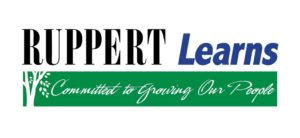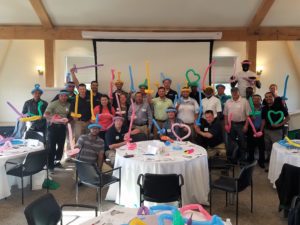“Growing our people.” To many of us, this statement has become the answer to a lot of questions about how we will succeed in the future. Developing talent in our people will drive quality, reduce turnover, and create a workforce that allows a growing company to promote qualified individuals into leadership and skill-based positions. This idea, this solution, needs execution. So, how do we grow our people? What tools do we use to prepare, direct, support, and manage our team as they develop the skills needed for Ruppert’s continued success? We focus on three key tools: communication, technology, and hands-on learning.
Communication, one of our core values, creates awareness in our branches and at our corporate headquarters of best practices, lessons learned, and how to capitalize on opportunities. To help our landscape management division, we have implemented a training committee composed of a representative from each branch, director of quality and efficiency, Joe Ketterer, myself, and other key players in the organization. This team meets virtually on a bi-weekly basis and performs a review of what training branches have done, what they should be doing, and how they prepare for the future. This communication highlights newly created educational tools, hands-on training opportunities that are occurring in the organization, and a review of process and expectations. The bi-weekly communication sets the standard for training across all of our branches and creates visibility into the efforts of our individual teams.
 Technology is applied in the use of our learning management system, which we have named Ruppert Learns. This is a web-based delivery and tracking tool that allows us to push assignments to mobile devices and track completion. This tool is used proactively in preparation for our hands-on training. It also facilitates just-in-time training, where an employee might be on the job site and need a reminder of the proper way to run equipment or the approved process for executing a job task, and could reference this tool to find the information. Ruppert Learns allows branches to assign their own online training to team members and generates reports for management to monitor progress and proficiency.
Technology is applied in the use of our learning management system, which we have named Ruppert Learns. This is a web-based delivery and tracking tool that allows us to push assignments to mobile devices and track completion. This tool is used proactively in preparation for our hands-on training. It also facilitates just-in-time training, where an employee might be on the job site and need a reminder of the proper way to run equipment or the approved process for executing a job task, and could reference this tool to find the information. Ruppert Learns allows branches to assign their own online training to team members and generates reports for management to monitor progress and proficiency.
The third most important item in our tool belt is our hands-on training. When performed correctly, this type of training proves mastery of the skill and enables knowledge and expertise to be replicated throughout the organization. In-person training should not be “show and tell” style. Even in our management training programs, courses have been reworked to allow students to see, feel, and experience management decisions rather than just hear or read about how best to act. Training is a repetitive process in which the student masters a concept or trait through a progressive evolution of actively assuming an increasing role that moves them from student to teacher. Hands-on training is complete when the student has demonstrated the skill and explained the concept to the level at which they are fit to become the instructor for the next student. We learn by doing; we master by teaching.
 Pictured right: On August 23rd & 24th, employees from across the company gathered at our corporate campus for a KASH training course, where they worked to uncover what Knowledge, Attitude, Skills, and Habits it takes to be successful at Ruppert. During a hands-on demonstration involving balloon art, instructions were given in a different way each round (visual, verbal, written, and step-by-step/hands-on instructions) to demonstrate the effectiveness of various training tactics on a group of people who all learn and retain information in different ways.
Pictured right: On August 23rd & 24th, employees from across the company gathered at our corporate campus for a KASH training course, where they worked to uncover what Knowledge, Attitude, Skills, and Habits it takes to be successful at Ruppert. During a hands-on demonstration involving balloon art, instructions were given in a different way each round (visual, verbal, written, and step-by-step/hands-on instructions) to demonstrate the effectiveness of various training tactics on a group of people who all learn and retain information in different ways.
Maintaining our culture, our edge, and our commitment to our customers depends on the growth of our people. Focusing on their development and using the right tools for the job are the key to a bright future for Ruppert. My motto is: if you plan for success, it should be no surprise when your plan succeeds.